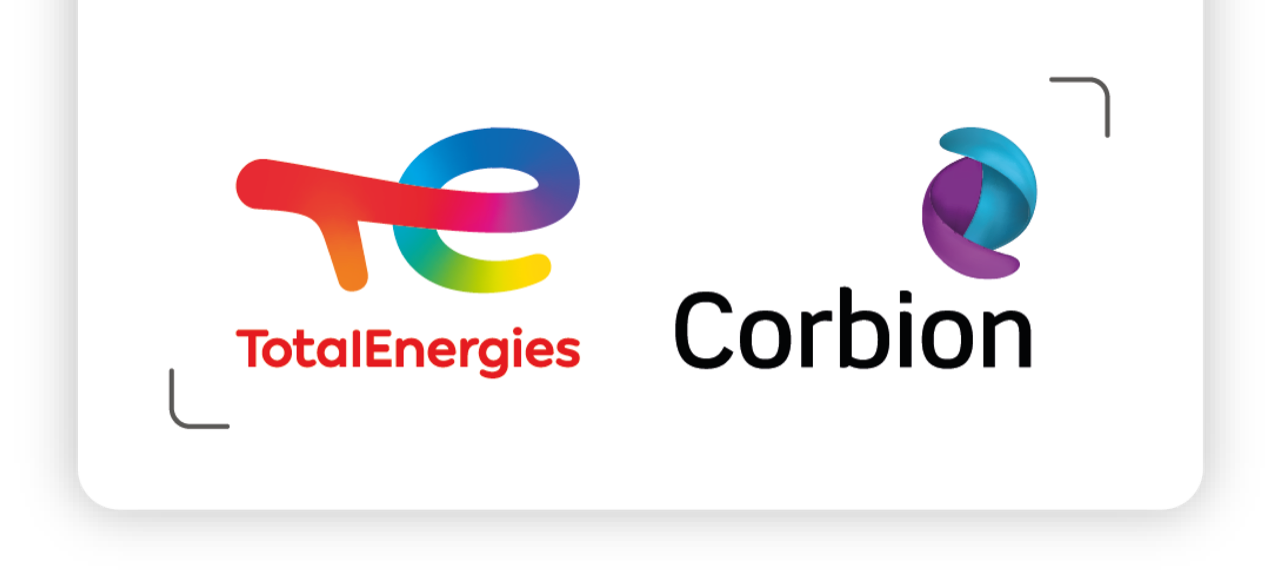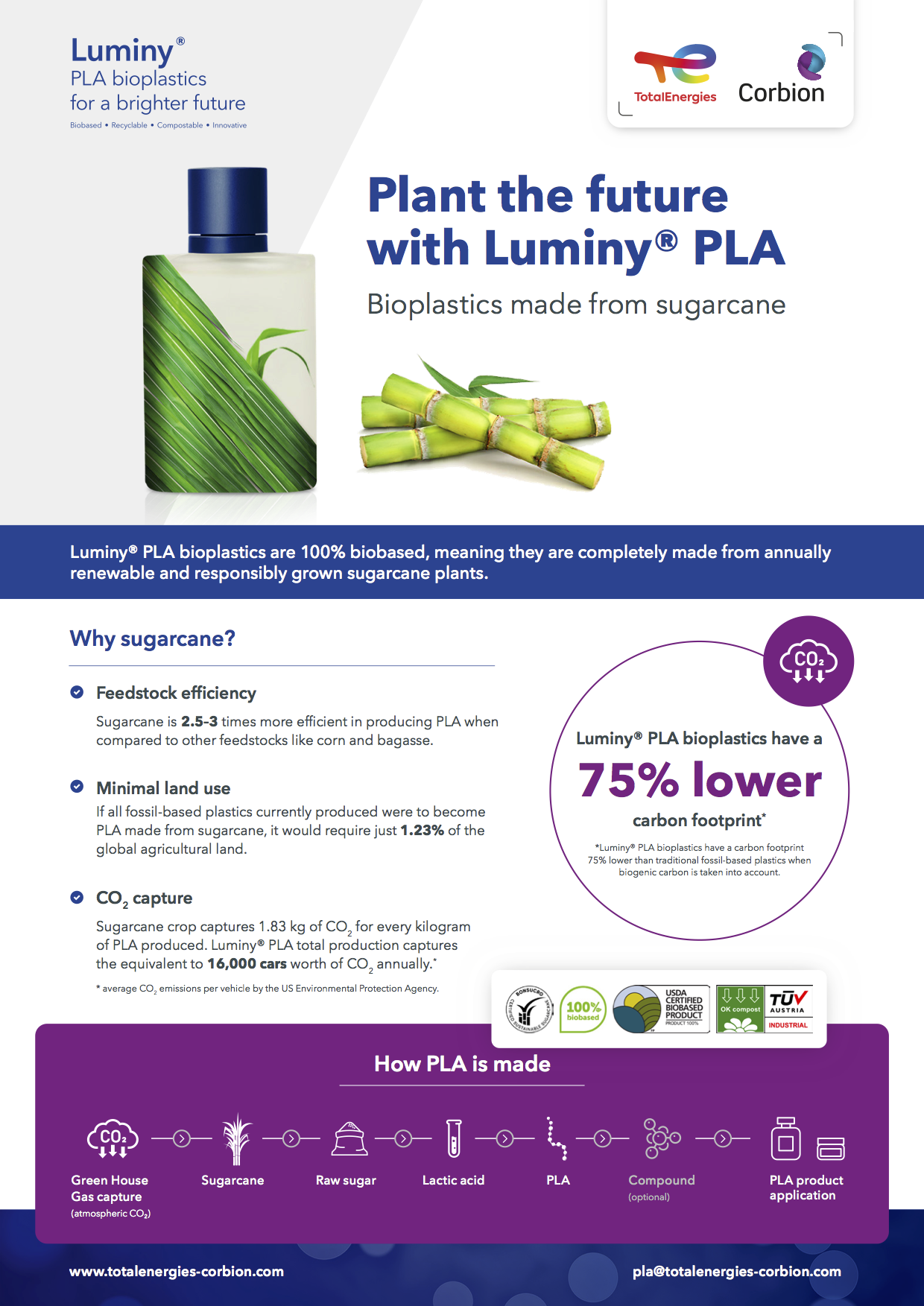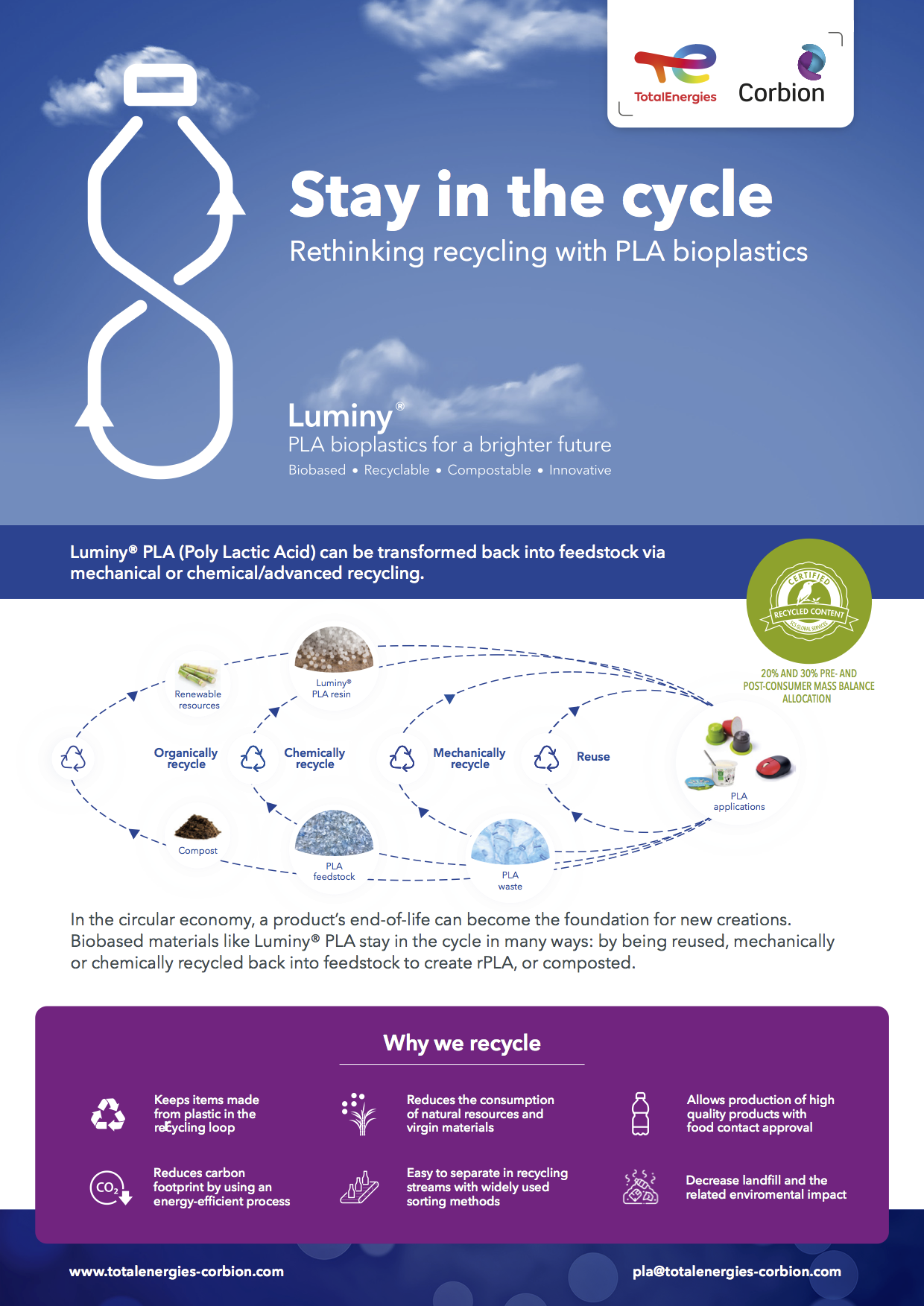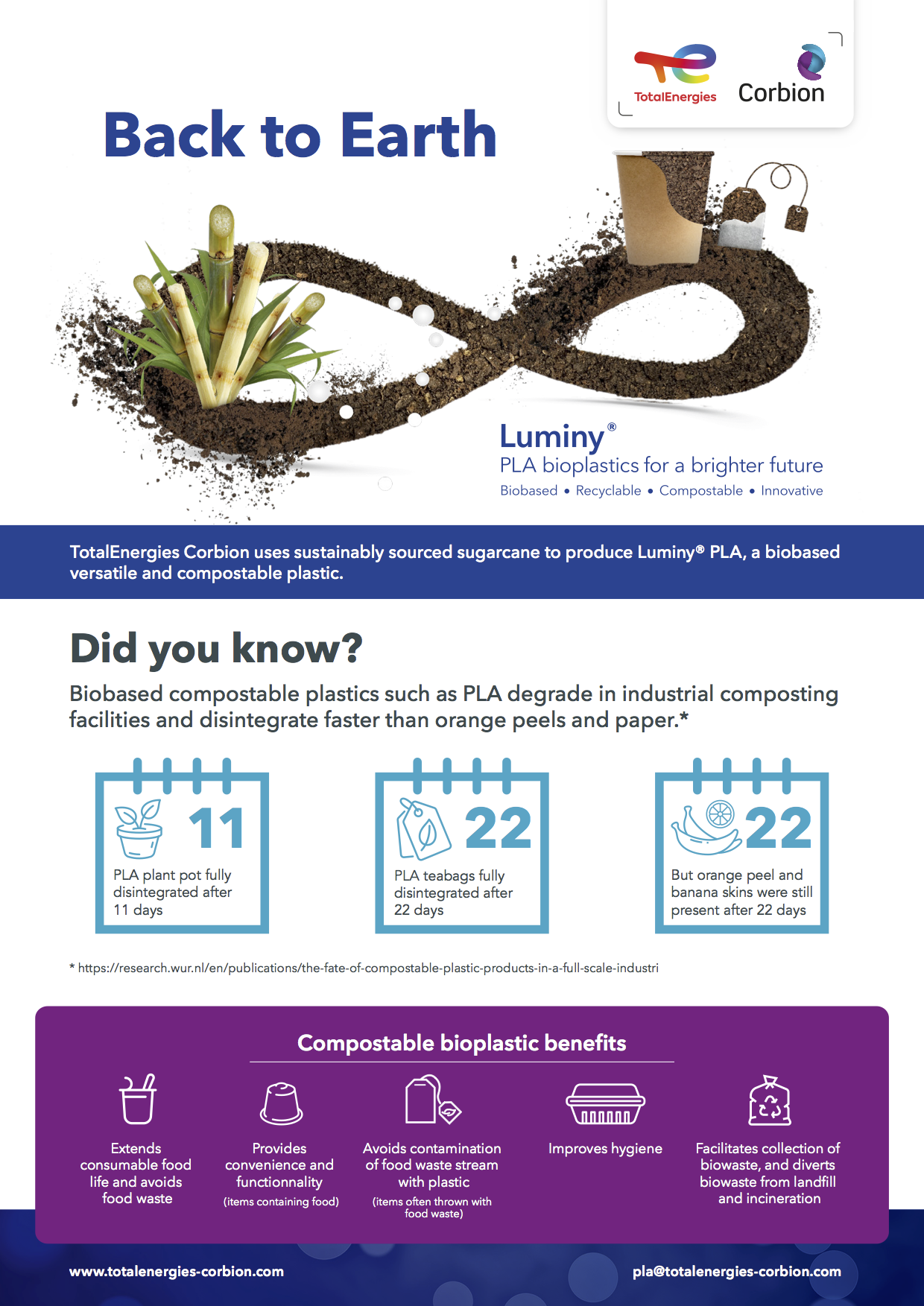
About PLA
PLA bioplastics - a new generation of more sustainable and environmentally
friendly materials
What is PLA?
PLA or Poly Lactic Acid is a range of unique bioplastics which are both biobased and biodegradable*.
*Throughout our communications, unless otherwise specified, the terms 'biobased' and 'compostable' or 'biodegradable' refer to EN16785-1 and EN13432 standards respectively. It is the responsibility of the article producer to ensure that claims on final products are substantiated by testing against the relevant standards. Check your locally available end-of-life infrastructure to ensure that legitimate end-of-life claims are made on the final product.
Reduced carbon footprint
PLA bioplastics enable products to be produced with a high biobased content and a reduced carbon footprint. In case of our Luminy® PLA, we offer a 75% reduction in carbon footprint compared to most traditional, fossil-based plastics. PLA is produced from renewable feedstocks like sugarcane, corn, sugar beet and cassava. Read the peer reviewed LCA.
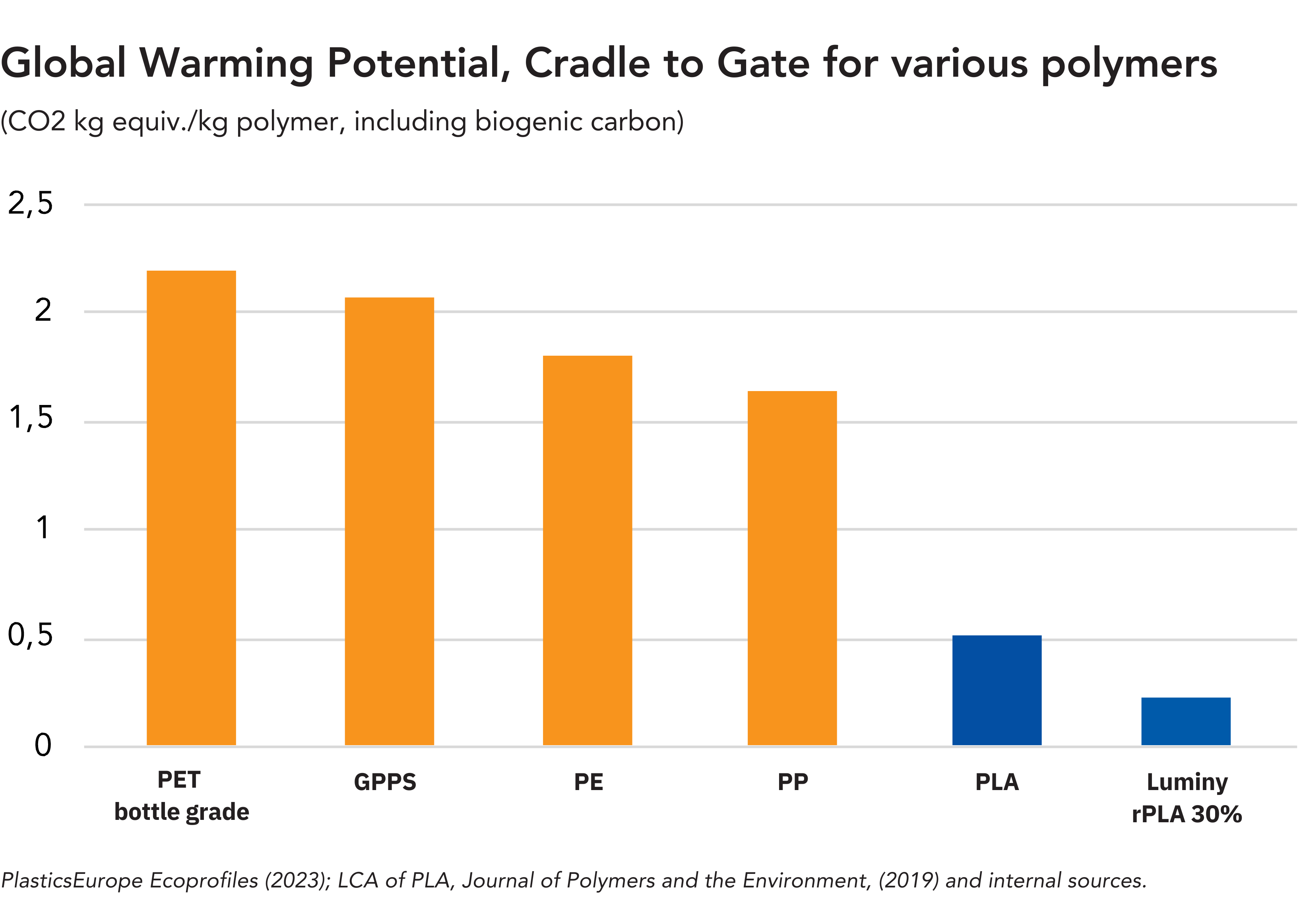
Biodegradation or recycling?
PLA bioplastics are biodegradable, which means that in the right environment they will serve as a source of food for microorganisms and funghi. After the biodegradation process is completed, only natural and harmless substances like water, CO² and compost will remain. For PLA, the biodegradation process is relatively fast in industrial composting facilities and takes longer in less biologically active environments. Besides composting, PLA bioplastics also offer additional end-of-life options like mechanical and chemical recycling.
High heat resistance
PLA bioplastics can already be found in a broad range of established markets, like fresh food packaging, organic waste bags, food serviceware, tea bags, durable consumer products, toys, 3D printing and non wovens.
Most PLA bioplastics of the past had the major drawback that they could not withstand increased temperatures. However, TotalEnergies Corbion has developed a high heat resistant solution for PLA-based bioplastics.
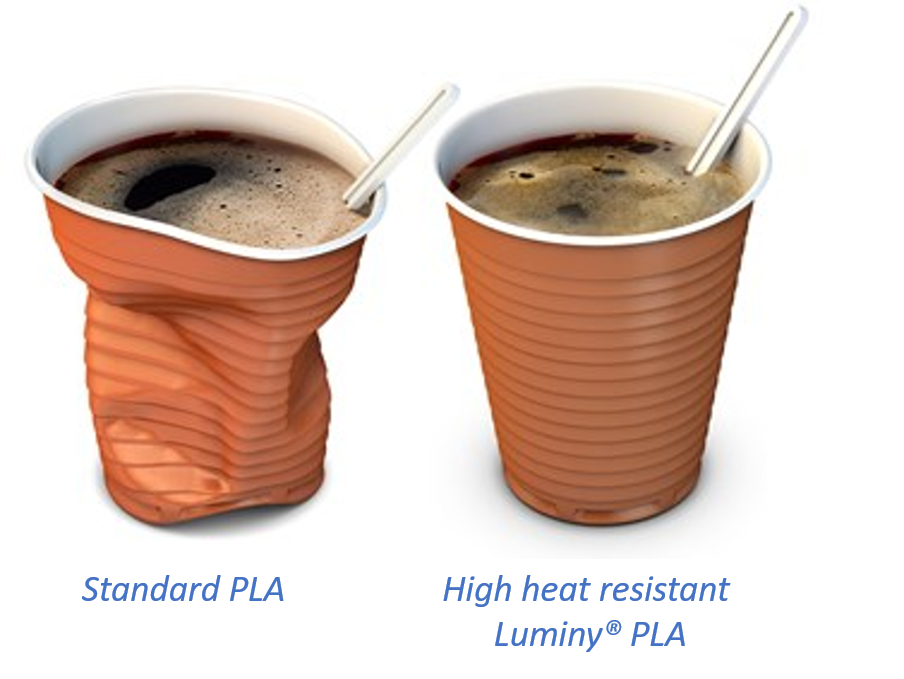
Raw material sources
Sustainable agriculture
Doing business in a sustainable way is embedded within our culture at TotalEnergies Corbion. For this reason, we also care about the sustainability of our feedstocks. For example, our key supplier of lactic acid, Corbion, is a member of both SEDEX, ensuring an ethical supply chain, and Bonsucro, a global non-profit initiative dedicated to reducing the environmental and social impacts of sugarcane production.
At Corbion, efforts are made to source the sugar needed to make lactic acid in a sustainable way. Corbion uses European sugar beet and Thai sugarcane as feedstock for the production of lactic acid, that is in turn used to make PLA bioplastics. These are always GMO-free crops, which is why TotalEnergies Corbion can offer our customers PLA produced from GMO-free feedstocks.
Second generation feedstocks
On lab scale, following an intense research project, Corbion has successfully made PLA resin from alternative, second generation feedstocks. The second generation feedstock was fermented into lactic acid and converted into a PLA resin boasting the exact same properties as current commercially available PLA resins. Second generation feedstocks are those which are not suitable for human consumption, and include plant- based materials like bagasse, corn stover, wheat straw and wood chips.
Today, first generation feedstocks such as industrial cane sugar, sugar beet, corn and cassava are used for producing lactic acid and PLA. They are grown following principles of sustainable agriculture and these feedstocks have a high yield per hectare of land.
